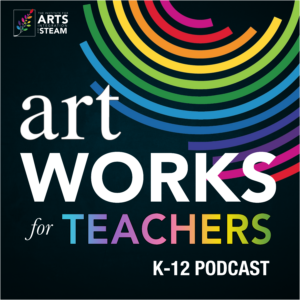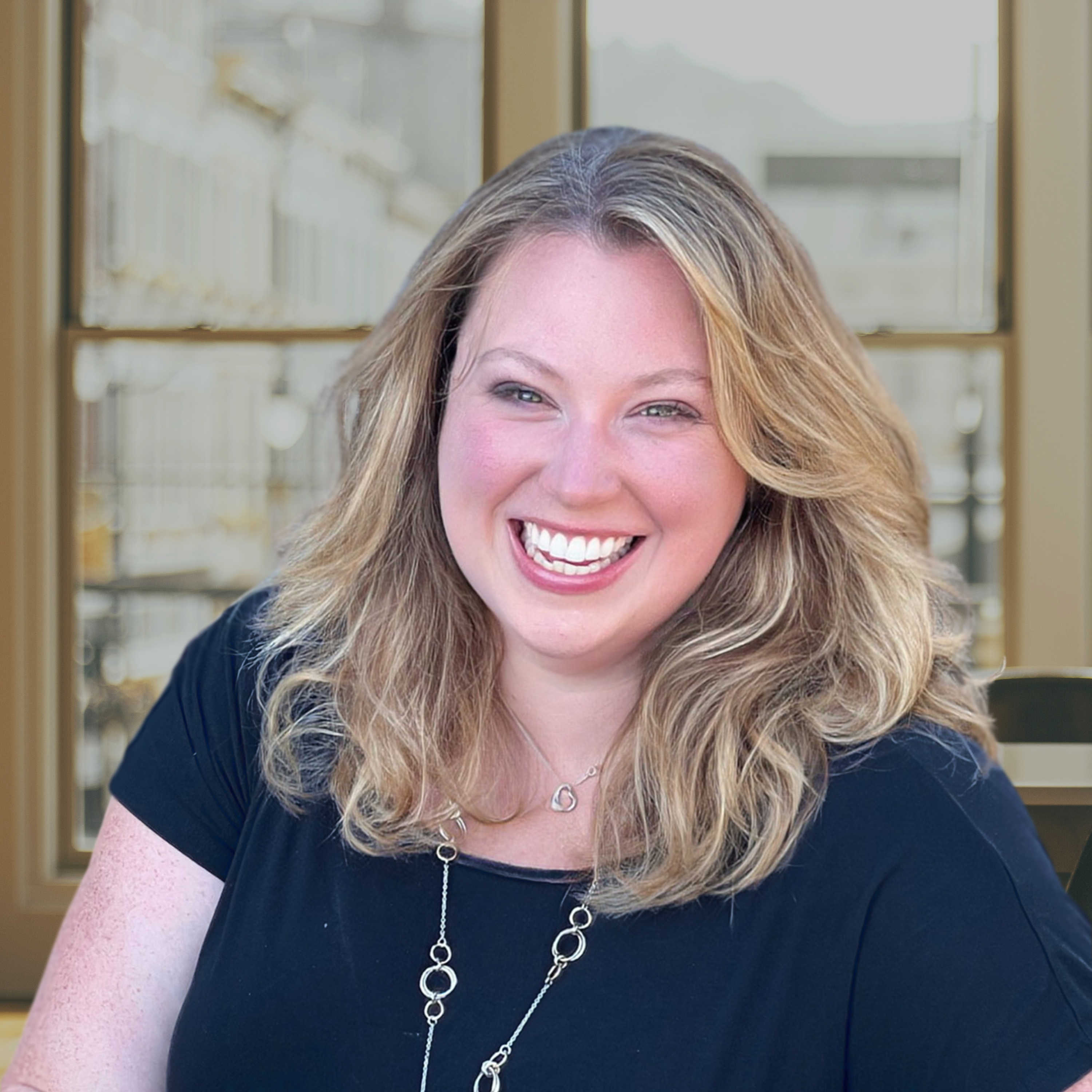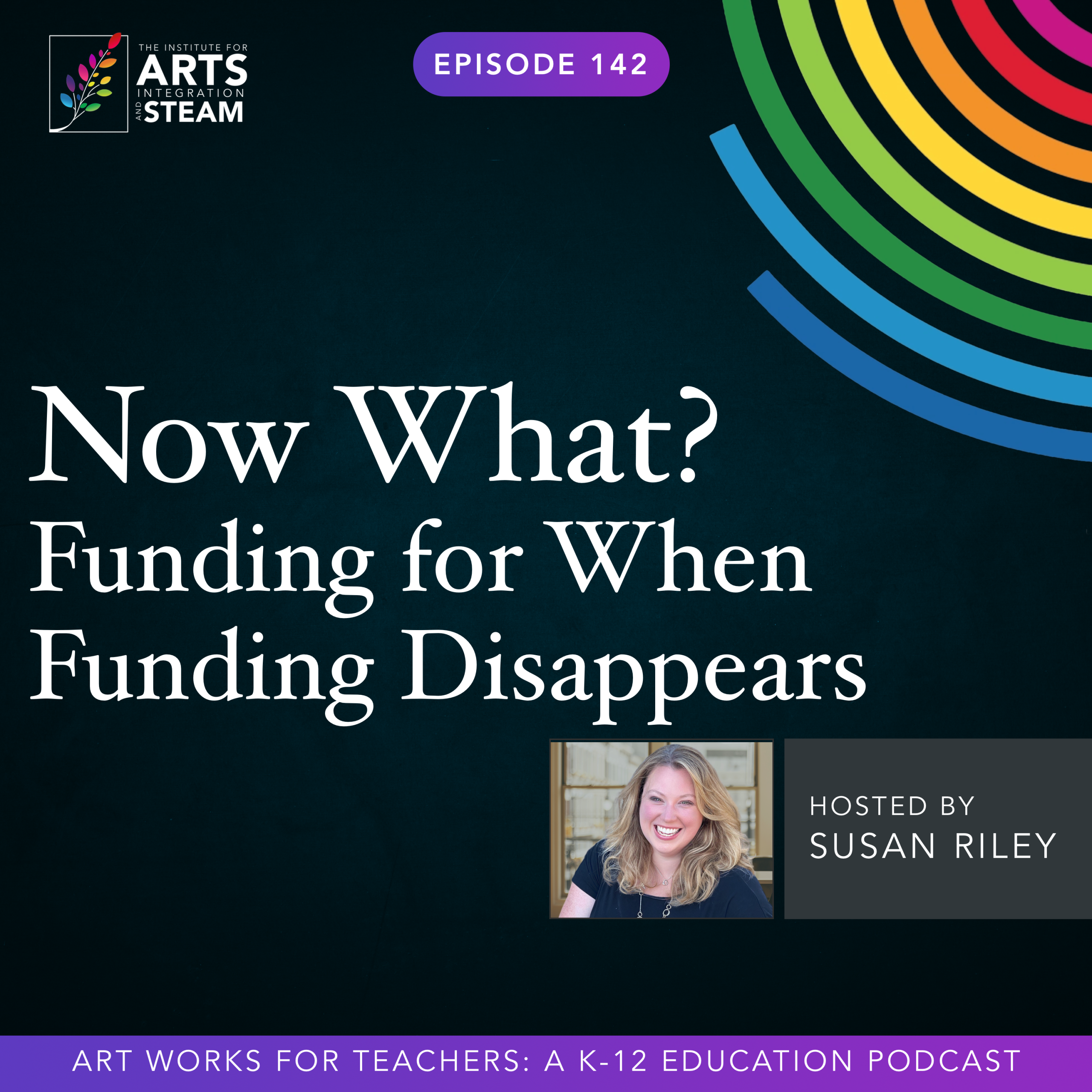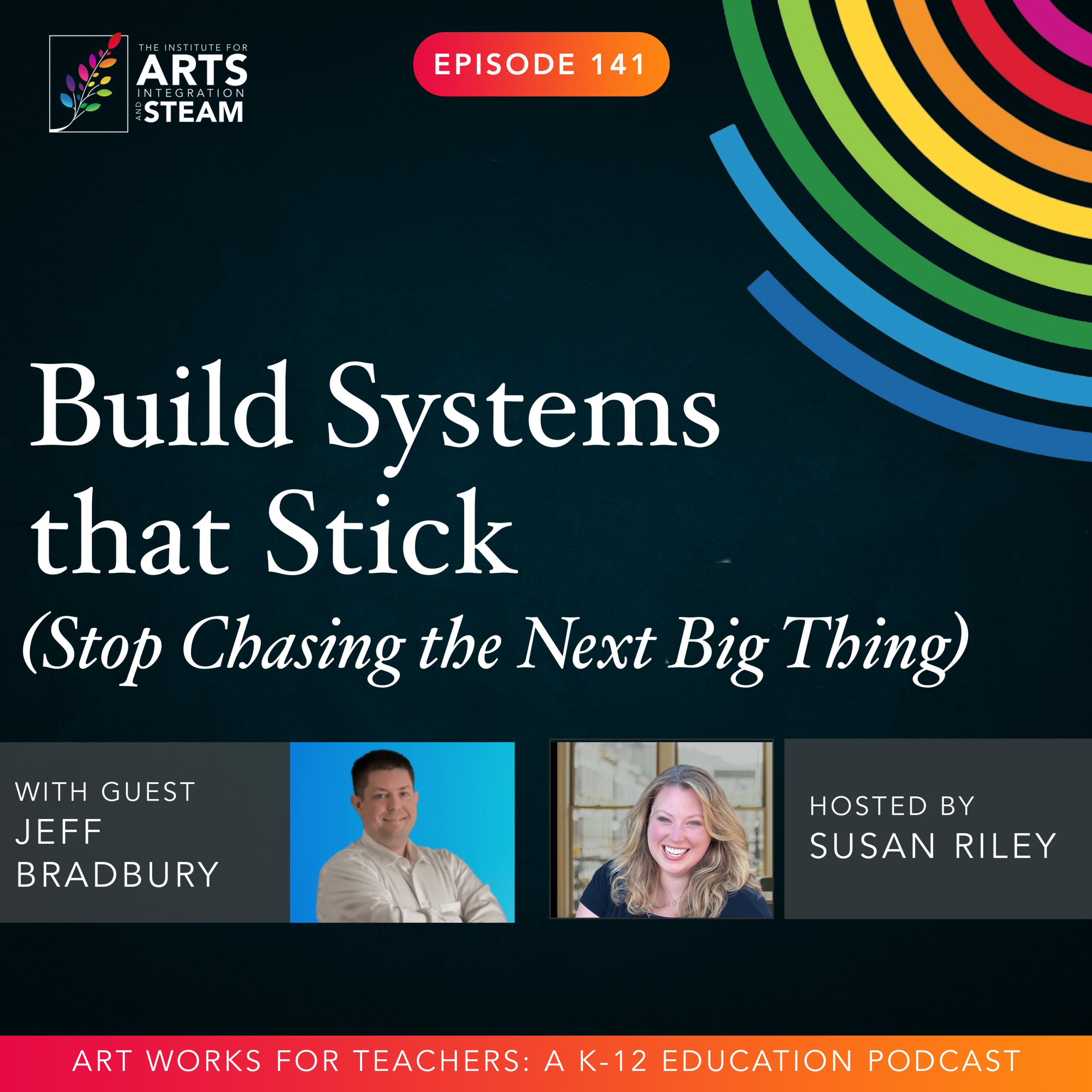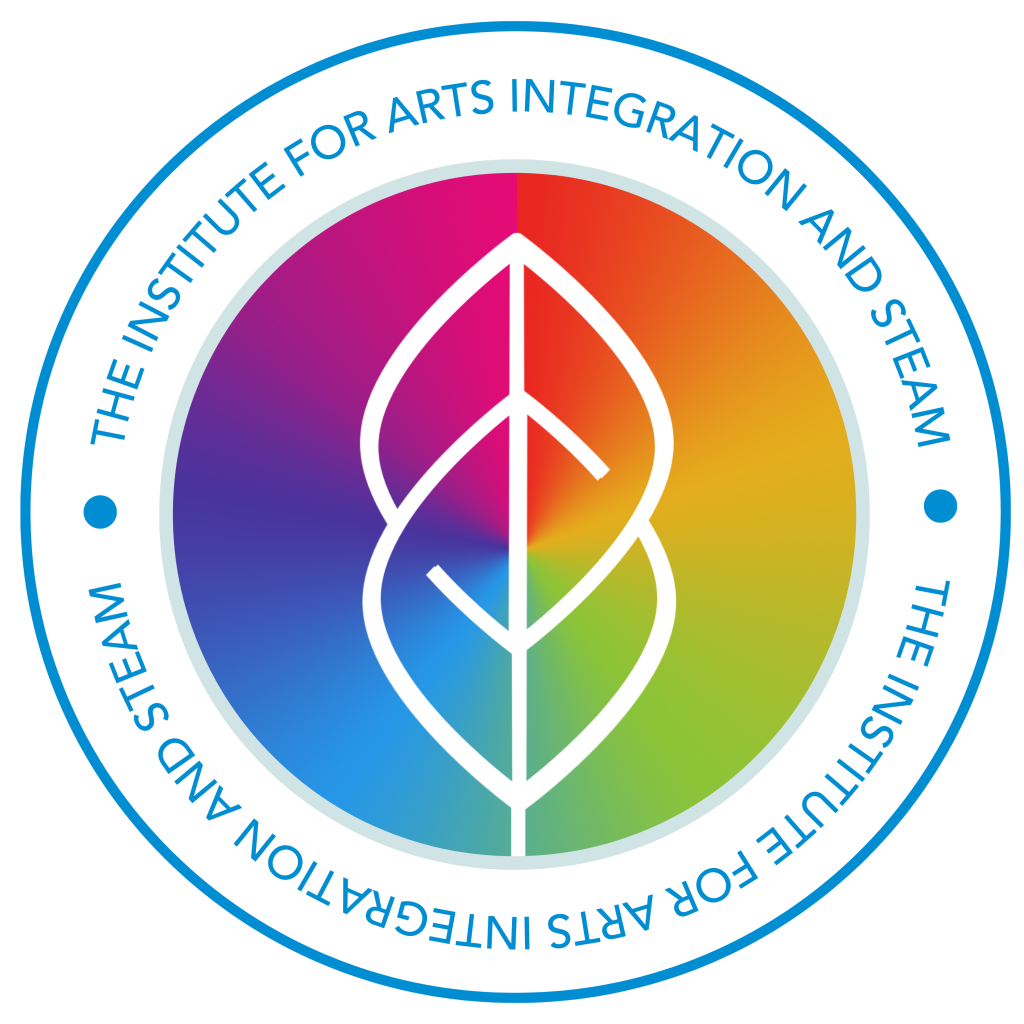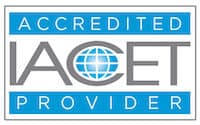ART WORKS FOR TEACHERS PODCAST | EPISODE 092 | 36:02 MIN
Exploring the Creative Side of Science
Enjoy this free resource introducing you to Foldscope.
Well, hi Holly, thank you so much for joining me today.
Holly
Yes, good morning and it’s really good to see you and thank you for having me on.
Susan
Of course, so for people who may not be familiar with you, how about you share a little bit about yourself, your background, and your work?
Holly
Absolutely. So this is, I have one of those like windy roads that describes my career. Yeah. So my background is, well, first of all, my name’s Holly Stewart and I am, my background is in chemistry. So I went to school and I studied chemistry, worked in industry for a while. And then I took a break to do that super important job of raising children.
Susan
Awesome. I love those stories.
Holly
And when I decided to go back into the workforce, I was fortunate enough to be able to say, OK, do I want to go back to the same thing or do I want to try something a little bit different? And after the experience of being able to be at home with my children and getting to be very familiar with the educational system as they were progressing through it, that’s what really started to speak to me and kind of pull at my heart. So I found a way to be able to go into the educational world.
I have worked in, I started off doing informal science education, so everything was science based, you know, because that’s, you know, with my background. So I did informal education in meaning that I was the person that schools would bring their classes to for field trips, and we would be, you know, outdoors, walking through the woods, doing, you know, looking at what’s in the river and things like that, so teaching science through those experiential type environments.
And then through some connections that I had made after doing that for a while, I transitioned into a classroom, so the more formal educational setting. I taught in an elementary school for a while. And it was a lot of fun because the way that I kind of came into it, I was part of the related art schedule or the rotation, I guess you could say. So students would go and they’d have their art class one day, music class another day, PE, and then one of those days was science.
And so they knew that when they came to me it was gonna be messy. They were gonna be doing something, you know, just come so much fun We had a great time doing that and I was able to really help out the the science teachers in the elementary school because a lot of times There’s there’s a bit of that, you know that nervousness or that you know that tendency to say I don’t really know science because a lot of the focus Truly is on the ELA and the math standards. And so, you know, I was a big support to the teachers, you know, they would tell me, these are the lessons we’re supposed to be covering. Can you come up with a lab that the students can do when they’re with you? And so it was a great experience. And then from there, I moved up to middle school. And that’s where I found like, that was so much fun. And it’s so funny because people, I mean, and I’m sure you’ve heard this, people say middle school and you get one of two reactions. You either get that like fear, like, you couldn’t pay me enough to work in a middle school to the others who were like me, who were just like, my gosh, but middle schoolers were so much fun.
Susan
And we need everybody who feels that way to be in middle school. Like we just need that.
Holly
Yes. Yeah, so I was able to teach eighth grade science and that’s where I spent most of my time in the educational setting was in eighth grade science and it was I loved it had a great time with it. I even I made it through the covid craziness too. Which is yeah. Yeah. And then from there I made a transition.
Susan
Good for you, that’s amazing.
Holly
to where I am now, which is with Foldscope Instruments, where I am the education specialist. And what that means is I’m creating resources for everyone. So not just resources for teachers, not just resources for kids, but for truly anyone who wants to learn about what can I see with a microscope? What’s really out there and how do I use it? So I’m trying to create resources that help people to take away that intimidation factor that people feel with science, that it’s complicated, it’s technical, it’s too hard for me, and just make it fun and accessible for everyone.
Susan
So I’m curious what led to your decision to leave the classroom?
Holly
So there were a lot of factors involved. And of course, like I said, I made it through the COVID craziness, but I started just feeling like there needed to be more. And I felt that I was making an impact on the students that I had in my classroom, but I started thinking about what is something bigger that I can do?
And honestly, the way that I found, I got very lucky with moving into this position that I’m in now. I just started looking at what were the things that I was using as a scientist that I felt could be really beneficial in a classroom. Because I didn’t want to leave the educational world. I still very much love science and very much love teaching it and seeing those aha moments in people, you know, on people’s faces when they’re like, wow, that’s so cool, those kinds of things. So I didn’t want to leave that, but I wanted to find a different way to be able to to make that impact in the science education world. And so that’s how I just started, like I said, thinking, what are some things that I have that I use? And I reached out to I reached out to Foldscope and said, you know, I would love to be able to help you guys develop content and resources for for people to use your product and get it in the hands of more people.
Susan
Yeah, absolutely. And I think I love that because so many teachers, they love education, but for a variety of reasons, sometimes they’re burnout, but for a lot of teachers, it’s more about when they’re leaving specifically the classroom. It’s more about how do I make a bigger impact overall, right? And I love that that’s a part of your story. It’s certainly a part of mine. It’s difficult to leave your kiddos and to leave a school building, but you can do it a little easier, I think, when you know that
I can have a bigger impact and a wider range of support when I can have a platform like you do with Foldscope. So tell us a little bit about Foldscope. What is it? How did it start? Give us a little bit of details.
Holly
Yeah, absolutely. So Foldscope Instruments is a company that started in 2015. But, you know, even though that’s when the company started, its origin story is a few years earlier than that. So there is a professor and he’s still he’s still at Stanford, a professor at Stanford whose name is Manu Prakash. He’s someone that a lot of people have heard him speak before he gave a TED talk actually about the Foldscope product and just work that he’s done.
But his background and his true area of interest that he works with is with what’s called frugal science. So one of the things that is kind of a barrier to people, you know, pursuing scientific careers or even learning about it in school is the price of the technology and the equipment that’s used. A lot of science equipment is extremely expensive, very technical and everything like that. So it’s not something you would normally picture just handing out to a bunch of kids in your classroom and saying, you know, go use this. And so frugal science is really like where his lens that he looks at a lot of issues in the world through. He was doing some field work in remote locations overseas and things like that. And a lot of the work that he does requires the use of a microscope.
But what he was encountering in these, you know, when he was doing field work in these remote locations is a lack of resources. And those resources could be the microscopes themselves, or even access to, even if you have electricity back in the lab, if you’re out in the field, you don’t necessarily have a place to plug something in. So just being able to think about ways that he could.
How can I get a microscope out here to use it where it’s truly needed and the information, you know, we need it in real time. So he came back after, you know, after doing a few of these trips, he came back to his research group and he said, okay, here’s what we need to do. There’s a huge problem. Cause he was seeing it in the locations that he was in and he’s imagining if you scale this up to, you know, worldwide and thinking globally, this is a huge issue that we’re facing.
So he ended up, he came back to his research group and he said, okay, we are going to come up with a microscope that is portable, that is durable, that doesn’t require any extra, you know, anything that you need to plug it in or anything like that. It can be used just on its own while you’re out in the field. And the clincher for him was he said, and it has to cost less than a dollar to produce it.
Now we’re talking microscopes or, you know, hundreds, some of them can be thousands of dollars. And this was what he charged his group with. And they went to, you know, they came up with all kinds of design ideas. And I could just imagine being in those rooms where, you know, like the creative design process and everything like that. And basically they threw away all the ideas of what a traditional microscope should look like. And they came up with something that they made out of paper. And I have it here. This is the original fold scope that they designed. So it is truly, I mean, you can see I’m bending it here for those who are just listening. It’s just, it’s made of paper and it’s got magnets to kind of clip things into place. But it is truly a microscope that is, it’s a high quality one too. So it can actually magnify what you’re looking at up to 140 times.
So, and the resolution is also really good because you can get a resolution of less than two, just under two microns. So you can actually see a single celled bacteria with just this piece of paper and a lens and some magnets. Yes. Yes.
Susan
That’s amazing, Holly. That’s incredible. Like, why do you not? Why does school all schools not have one of these? Like at least one? Holy cow, Hannah, that’s amazing.
Holly
I, that is a great question, Susan. I would, this is truly, I mean, when we think about, when we’re talking about, what kind of resources do we need to create and all that kind of stuff, it truly is so that we can get one of these in the pockets of every student everywhere around the world. We want it to be something that’s as commonplace as in a classroom as a pencil. You wouldn’t think.
Susan
Yeah, so what’s the retail price on one of them?
Holly
So what we do, these are sold, so we have classroom sets. So a classroom set of the original Foldscope is $35 for 20 microscopes. $35 will get you 20 of these, yes, yeah. It really, I mean, and it was, so the, and again, so the.
Susan
my gosh, like every school has that. Every school has that. We can definitely win at that. Yes, it’s amazing.
Holly
The original project was, you know, wanting to create these, you know, finding a way to make these. Once they started making them, what they did, which I think is just genius, what they did was they said, you know what, we need to be able to, you know, make sure that this is something that can truly work, that it resonates with people. And so they would send them out to people and ask them to say, OK, what we want is for you to use this. No, no, like prescribed, here’s how you have to use it, use this and then let us know what you did with it. And we have a platform called the Microcosmos where people who have fold scopes will send, you know, they’ll post the pictures that they’ve taken, you know, observations, reflections, things like that on how they used their fold scope. And the results of what people did went above and beyond anything that we could have possibly imagined for you know, using a microscope. I mean, we had people that were, you know, testing for biodiversity and soil samples in the Amazon, people who were looking at bacteria and water quality in, you know, remote areas. And then there was, I remember this one little girl who was, she wanted to see what ice cream looked like underneath her full scope.
So there were a bunch of trial and error. You know, they ended up, I think what they ended up having to do was she and her mom, they were like, because they were trying to look at it, but of course it was melting. But then they realized we can just stick this in the freezer. You know, so they just took the whole, stuck the whole microscope in the freezer with the sample in it and they were able to see it. So just the creativity and the, you know, what you can do with it, it truly is limitless.
Susan
It is like I’m just in awe of this right now because I’m thinking about all the ways that artistically you could use it as well creatively just it’s that’s incredible and as a as a daughter of a chemist like that I I’m just blown away. So talk to me a little bit more about your philosophy and then maybe the company’s philosophy around science and arts integration in specific and then maybe some examples of how Foltzko could support those kinds of connections.
Holly
Yeah, absolutely. So I know that for me, when I was in the classroom, honestly, my perspective was that we need to get rid of those educational silos. It shouldn’t be math is taught here, English is here, math, you know, it’s all integrated together. So I was very fortunate a couple of my years, because, you know, with middle school, they rotate out, you know, teachers and things like that. But I had a couple of years with teams that we all had that same philosophy and we would work together to come up with those projects that, you know, it was like the, we would do a part of it in my class and then another part in the social studies, another part in the math, another part in the ELA, and then it would kind of all come together. And it was so funny because the kids were like, wait, but we were just talking about this with Mrs. So -and -so and wait, this was supposed to be something we’re doing in math. And I’m like, no, it’s all together. So I really feel that the content areas go together naturally. And I think that the arts is a really important part of it because it’s one thing to have all the information and all the data and all the knowledge, but the way that you present it, it takes a certain, the artistic lens through which you can think about the content, it really can make a difference in how it’s received by your audience.
And I have learned a lot through the Arts Integration Certification process. And I’ve learned that what I was doing was more, it was a little higher level than what we would call the arts and crafts kind of a thing. Because I was bringing the arts into my classroom, but there wasn’t an assessment for the arts part of it. But it was definitely a huge influence on the work that I was doing.
And I found that my students, when they were able to, when they knew that their final assessment, their final project was not going to be a multiple choice test, that I just told them, I want you to think of what are some things that you’re interested in? How does that relate to the content? And then how can you mesh those two together to show me what you know when they had the freedom to be able to do that, I mean, everyone in the school knew when Mrs. Stewart had end of the unit assessments, because people were bringing in stuff that was just way above and beyond. I had, you know, giant canvas paintings that people would make. I had, you know, the digital arts. I had a student who was very into Minecraft, and he created his whole entire project in a Minecraft world. You know, just show me what, I mean, it was…
It was amazing what kids could do. And so just seeing the power of the arts applied in just a science classroom was huge for me. So I, and I, you know, I can only imagine in other content areas, the same kind of impact that that could have. So I definitely feel that arts and science go together. And then I’m bringing that into the work that I’m doing with Foldscope as well because I write blogs for Foldscope. One is called Foldscope Explorers and one is called Foldscope in the Classroom. And with both of those, what I’m doing is just kind of finding things that are out there and then presenting it in a way that makes people say, my gosh, that is so beautiful. And drawing them in through those, getting those emotional ties to the images that you see. And it does take an understanding of the arts and how you would present it. So I am definitely doing that through that kind of a lens. In the Foldscope and the Classroom blog specifically, I have a section, you know, I give a science activity that you can do. And then at the end, I do give those ideas for how you can integrate this into other content areas. So it’s definitely something that Foldscope is moving forward with trying to bring in those artistic elements. And that is one of the things I know that we were going to be talking about it with this, the newest project that I’m working on with Foldscope is definitely having more of an artistic influence in it than stuff that I’ve done in the past.
Susan
Yeah, and I’m thinking like, just as an example of like looking at microscopy and art, being able to look at the beauty and the symmetry that often happens when you’re looking at something under the microscope. Or we have a lesson called Aboriginal watershed where you’re tracking the water sheds in your personal area. So it’s based out of an Australian painting, but.
it uses that as a prompt for students to look at their own watershed. And I’m thinking with the amazing flexibility and cost effectiveness of something like a foldable or a fold scope, you can take that right out into your watershed and immediately have them take a look at what’s in the water, right? And have that become a part of that project. I think that’s just a wonderful natural connection of maybe just two lessons that would be super easy to start bringing in some kind of STEAM ideas of integrating yards. You talked about a new project. I know that this is a new Kickstarter for you guys called the Projection Microscope, right? So can you share a little bit about that?
Holly
Yes. Yeah, yeah. So we started working on basically we were thinking about the reactions that people have when they’re looking at something in a fold scope and first thing that they do, they’re looking at it and they’re like, wow. And the first thing they want to do is share it with somebody else. You know, it’s always, you know, look at this. And then people are trading and everybody’s looking at everybody else’s samples. And it is it’s a great thing. And we do have you know, to be able to share your images, we do have one of the things that it does is, again, some of the parts are magnets, so that is magnetic there. And we have a thing that you can attach to your phone. It’s just another magnet. So you can actually hook your phone onto it so you can take pictures and record video. So that is one way that people were sharing what they saw. But as you know, we do have, you know, there’s a lot of classrooms in there, and I’m not going to go into this whole area, but technology in the classroom, you know, people saying you are allowed to have phones, you’re not allowed to have phones. So if there’s classrooms that don’t have the ability to use a phone with their fold scope to be able to share stuff, we were thinking, how could we get them to be able to still have that collaborative experience, but have it be more immediate? And we started thinking about projection. And so we came up with the idea of having a dedicated microscope that is a projector. So it’s a projection microscope. We are, I don’t have the latest, we’re still in development of it, but I have like an early iteration of it. But it is basically, it’s a microscope that the light comes out of here. And so you can actually project whatever sample you have collected. So, and it’s, it’s an absolutely amazing feature. And I’ve, you know, tested it in a, in a few classrooms and it has been amazing to see how the teachers response to it because you can imagine if you’re trying to assess your students on whether or not they’re seeing what you want them to see, you know, if they’re like, yeah, yeah, yeah, I see it. And then the teacher will go and look and it’s not even on the right part of the sample. So this is a quick and easy way for now. Teachers can quickly assess, OK, you know, go ahead, put your slide in the projection microscope, project it out there. Now show me what the different parts of the cell are or show me the different things that you’re seeing in this sample. And the students would be able to very clearly go and point to it, and the teacher knows, did they see it or did they not? And also, before setting the class loose to use their fold scopes on their own, the teacher can use that projection microscope to project an image of, now this is what we’re looking for in your samples. So I want you to be able to, they’re gonna have to.
their own slides and everyone will be able to do it. You don’t have to share one microscope in the whole entire class. So you can have your students prepare their slides with that prior knowledge now of what it is that they’re supposed to be seeing and they know if they’ve got it or not. So it’s a yeah so we’re really excited about this new about this new project and then there are of course those ties to the arts are going to be in here as well if you want me to expand on that.
Susan
Absolutely please, yes.
Holly
So one of the things that we also noticed was when people want to draw what they see, you know, in the same way that with science people, I can’t do science, it’s too hard. People have that same response with art. I can’t draw. I can’t. I can’t draw this or anything. Even if you’re telling them just to, you know, just a basic structure, just go ahead and replicate it on your paper. There is that intimidation factor. But with the projection microscope, now you’ve got that projected image. You can actually trace it and then you know that the model that your students are creating based on whatever sample it is that they’re looking at, you know that if they’re drawing a cell and they’re drawing the nucleus within the cell, you know, drawing the cell walls and all that, everything is to scale on their model that they’ve recreated. So they know that there are certain structures that are bigger than others, they’re able to label them properly. And so just thinking of how that can help with you know, improving their artistic abilities as they get more comfortable with seeing it and tracing it, then they can start doing it on their own and then they can, you know, develop on from there. And there’s so many different, the different elements of art, you know, thinking in terms of line, form, shape, texture, all of those types of things. It’s truly amazing how those come to life when you’re looking at these specimens underneath the microscope, because there are so many things that look like they’re just flat and two dimensional, but all of a sudden you put it in a microscope and you’re like, there are so many levels of depth that are within that sample that when you’re drawing it or even describing it, think about the vocabulary enhancement that can come from this, that students are now getting more, it’s.
It’s more of a connection, I think, with the actual content than just looking at a picture in a textbook.
Susan
And I think also the observation skills that have to happen and occur with looking at anything in particular. But if you’re taking a look at something, a sample in our Microsoft, right there is an opportunity to use some visual thinking skills like see, think, wonder, or think, puzzle, explore, or any of the ways that we can expand and extend a student’s ability to observe, take their time, and describe in detail what they’re seeing, as well as prompt them in either further curiosity, right, of why is it like that? And it spurs them on to the next step, right, which I think is super important, because that’s where we need them to be, right?
Holly
Yes. Yeah, you don’t want them to just, okay, I’ve looked at this one thing and now I’m done. Are all leaves like this? Is it just this plant? Is it just this plant on the bottom? Is it the leaves on the top of it? I mean, there’s so many different ways that you can go. Yeah.
Susan
Absolutely. So now when is the projection microscope slated to maybe be available?
Holly
Yeah, so fingers crossed the Kickstarter should be launching, I’m guessing right now we’re saying sometime in August. So probably the end of the end of the summer. But, you know, obviously you can, you know, going on to our website, sign up for a newsletter that’ll keep you updated so you know when to, you know, when to join in and start supporting us and getting these, you know, full scopes and the projection microscope into classrooms.
Susan
Perfect. So before we close, there’s a question I always love to ask our guests and I always get a different answer, which I think is so amazing. It kind of speaks to the question itself. From your experience, how can creativity impact education today?
Holly
Yeah, I love this question because creativity is a, it’s a huge part of, you know, people a lot of times associate it with art, but it’s a huge part of science. Like we were just talking about the questions that can be generated from just one observation of one specimen on a slide. But I think that truly creativity helps to remove those barriers, the barriers to access of science education because
A lot of times people don’t see themselves as scientists because, you know, the lack of the resources, they’ve never had a chance to actually use the materials before. But if you are able to present the information to people in a way that is different from, you know, the norm and you can just kind of tell them that this is something this is just like you were saying, a jumping off point that this is a resource that you can use to pursue something that’s interesting to you. Because these are things kids can take them home. They don’t have to and they shouldn’t stay just in a classroom because this truly is something you can use inside, outside, at home, wherever you happen to be. I take mine with me any family vacations. Everybody knows, you know, mom or Aunt Holly is going to have at least one with her. But I think that truly getting people to have an opportunity to use a scientific tool. It helps them to be then they start thinking and they have those questions and wanting to try out new things. And that gets them interested and engaged in a way that isn’t trying to think of the right word in a way that isn’t intimidating, I think is really the big part of it, you know, and they can get the fear out of the equation and just start fearlessly exploring their world. And then they can see themselves as scientists and
For a lot of human history, scientists were only a particular type of person. And now we’re seeing that everyone, truly everyone is a scientist. And the more people we can get thinking that way and genuinely internalizing that message, I think the better off we’re gonna be because representation really does matter. And we’re able to get a lot more people to the table to have scientific discussions now with these tools.
That’s how I think it’s going to help impact education.
Susan
I love it. I think what’s amazing and I think you’re right on. You’re right on. So where can people learn more about Foldscope and you and stay in touch?
Holly
Absolutely. And we really do, and I know that a lot of times people say this, it’s lip service, but I really do want people to reach out, whether it’s to me or to the company, to find out about our products and what we can offer and our resources. But we have our website is foldscope .com. That’s kind of like the hub where you can find everything, all of our resources, tutorials, our store, our videos, all that kind of stuff. The blogs are all on the website.
And then we do have and on the website is a link to that microcosmos page that I was telling you about that people, I mean, from all over the world, if you do nothing else, go to that microcosmos website and look at the things that people are finding and seeing and sharing. It truly is absolutely amazing. But that that link is there, too. But it is microcosmos .foldscope .com is if you wanted to go directly to the website. We are on all social media as we are, you know, Twitter, LinkedIn, Facebook, Instagram, TikTok, all of those, we’re there. And if you want to reach out to me directly, it is holly at foldscope .com, so that’s my email, or you can follow me and look at the things that I post on social media, I’m at holly A. Stewart. So, and I can make sure that you have all those, if you put them in the show notes and things like that.
Susan
Great. Yep. Yep. We will absolutely do that. All of those links and everything will be in the show notes that people can easily access them later on. Thank you so much, Holly. This has been such an enlightening episode. I’m so excited. My wheels are already spinning about how this can be used in classrooms and with Arts Integration and STEAM. I just, I thank you so much for sharing this with our audience.
And I’m really hoping that many of them take you up on getting those classroom packs because I think, I mean, it’s so accessible for everyone and it’s something that we can definitely use more of in schools. So thank you.
Holly
Yeah, absolutely, absolutely. I’m hoping that my inbox will be filled up with people wanting to talk to me about it and ask about it and get training on them and everything. Yeah, I’m happy to talk to people about it.
Susan
Me too. Me too. All right. Thank you so much, Holly.
Holly
Thanks, Susan.
Social Media:
-
Foldscope on X
-
Foldscope on Instagram
-
Foldscope on TikTok
-
Foldscope on Facebook
-
Foldscope Instruments, Inc on LinkedIn
-
FoldscopeInstruments on YouTube
Connect directly with Holly:


